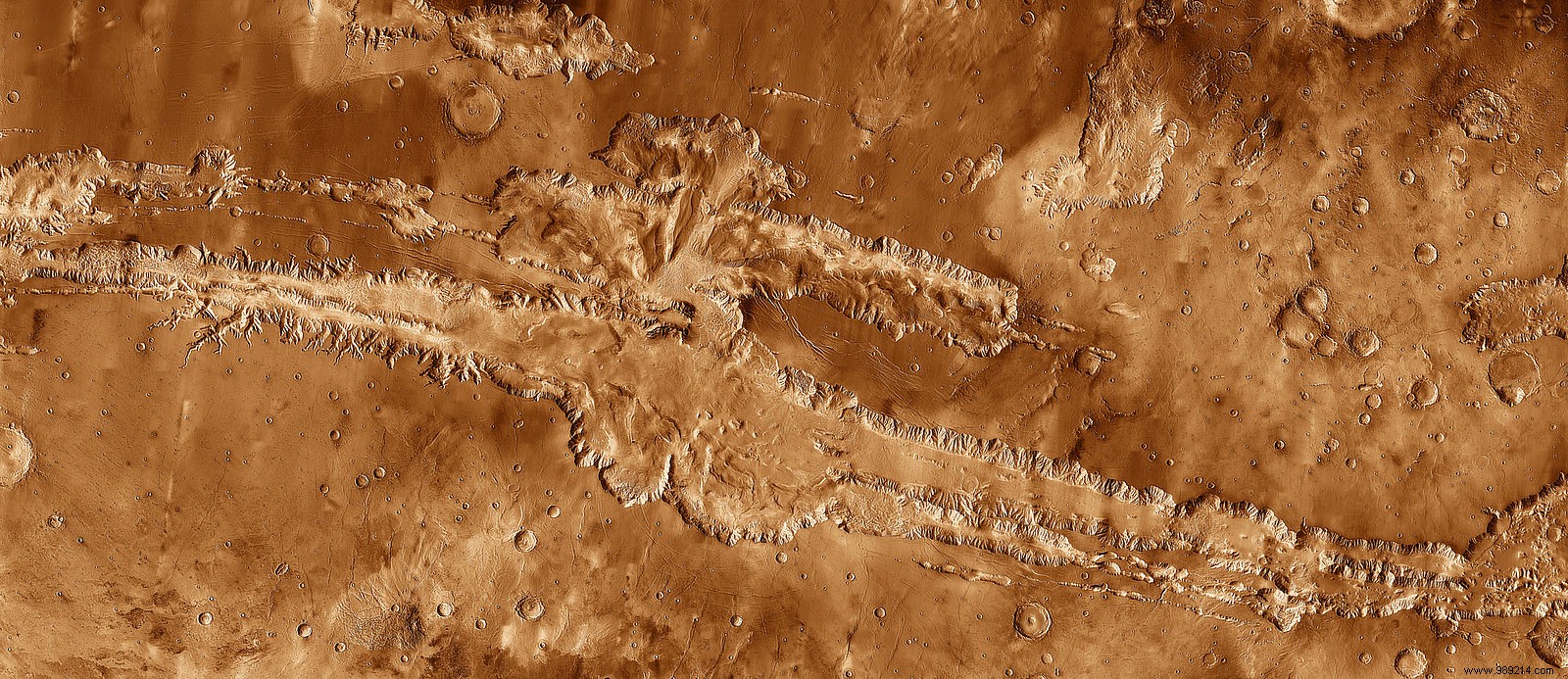A team reports the detection of an unusually high amount of hydrogen in the central part of Valles Marineris, a vast system of canyons located near the Martian equator. These data still need to be confirmed. However, they suggest the presence of large quantities of water buried a few centimeters below the surface, probably in the form of ice.
FREND is an epithermal neutron telescope onboard the ExoMars Trace Gas Orbiter, a probe developed by the European Space Agency (ESA) and the Russian agency Roscosmos. As its name suggests, this instrument focuses on neutrons. Concretely, neutrons are released when highly energetic particles (cosmic rays) strike the planet Mars. Drier soils emit more neutrons than wetter ones, so this instrument can deduce the amount of hydrogen in a soil by measuring the neutrons it emits .
We know that there is water on Mars, mainly at the poles in the form of ice. At the equator, however, conditions are too warm for water ice to form on the surface. On the other hand, it is possible that water is underneath, which brings us to this study published in the journal Icarus.
As part of a recent observation campaign, the FREND instrument would indeed have spotted an unusually high amount of hydrogen in the heart of Valles Marineris (a region called Candor Chaos). As a reminder, Valles Marineris is a vast system of canyons extending over 3,770 km that can locally reach a width of 600 km. It is to date the largest known structure of this type in the Solar System.
Previous research by other Mars satellites has measured the presence of groundwater ice under these conditions, but only at higher latitudes.

The discovery suggests that at depths ranging up to one meter below the surface , the soil in this region, which is about the size of the Netherlands, could be rich in water. On site, the minerals generally contain very little water. Also, the researchers believe that the substance is probably in the form of water ice.
Based on measurements, up to 40% matter near the surface of this region could be water. The researchers refer in particular to the permafrost regions of the Earth where ice persists permanently under dry ground due to constant low temperatures.
The question of how this water was able to persist in this environment still questions researchers. The pressure and temperature conditions at the equator of Mars should indeed prohibit the formation of such reserves. Further investigation will therefore be necessary, but such a discovery could have great implications. Indeed, just as is the case on Earth, this Martian permafrost could have preserved frozen fragments of microbial life. The discovery also represents exciting possibilities for human exploration of Mars.